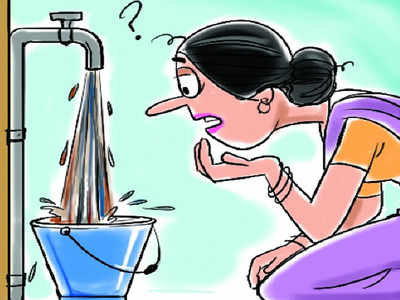The Hindu 05.03.2013
‘Sewage disposal most flawed part of urban planning in India’
Slums account for a quarter of the urban population, but
get only one twentieth of the total water supply, said Vice-President
Hamid Ansari on Monday, referring to the sharp inequity in water supply
in the country.
Expressing concern over the quality
of water and the declining water table, he said: “Even the lucky one’s
who are connected to the regular water supply system, get water of
dubious quality, in an erratic manner. The solution being pursued is to
bore wells, which is in turn is leading to an alarming decline in the
water table, engendering a possible national groundwater crisis.”
Speaking
at the second Anil Agrawal Dialogue on ‘Excreta does Matter’ organised
by the Centre for Science and Environment (CSE) here, Mr. Ansari said
the country needs to work on the twin challenges of water conservation
and waste water minimisation.
“Cities have used up or
have polluted their water resources. India’s burgeoning cities have
started sourcing water from far, outlying areas, to quench their thirst
for water. Consequently, the cost of water has gone up due to the need
for building expensive water supply infrastructure; leakages have
increased to around 40%; and water-related conflicts between competing
consumers are a distinct possibility. Besides the shortfall of water
supply, stark inequity in access to water in our cities is also a
reality,” he said.
Referring to the report ‘Excreta
Matters’, a two-volume report provides details about the water and
sewage situation in 71 cities across the country, Mr. Ansari said:
“…waste and water are two sides of a coin. Indian cities produce nearly
40,000 million litres of sewage per day, enough to irrigate 9 million
hectares. However, barely 20 per cent of this is treated, which is an
enormous waste of a critical resource. Our cities have still not
understood that wherever there is water, there will be waste. This waste
needs to be collected, treated and then disposed. However, sewage and
sewerage still remain one of the most neglected and flawed part of urban
planning in India.”
The Vice-President said
pollution load coupled with overexploitation has killed many rivers.
Simultaneously, urban lakes and wetlands have steadily disappeared under
‘development’ or have become cesspools. These water bodies are crucial
to the survival of our cities, as they maintain the groundwater balance,
absorb and store water from rainfall and moderate the climate.
Urging
people to conserve water, Mr. Ansari said minimising water usage also
helps in cutting down generation of waste water. He said only with a
judicious combination of water supply and waste water management can
water crisis be addressed.

